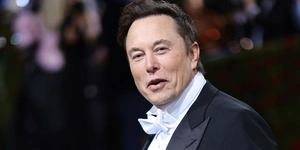For the past 50 years, Amina Begum has been living with smoke. The 56-year-old housewife from Khairpur Gurjar village in Greater Noida is one of the 600 million Indian women whose lives revolve around cooking stoves fired by wood, cow dung, crop residue, and coal. The global numbers are similar—around 3 billion or 40% of the total population depend on such stoves for cooking. Of these, nearly 4 million lose their lives to smoke-related ailments every year. Lack of liquefied petroleum gas (LPG) and kerosene has perpetuated the dependence on such stoves.
While the fuel cannot be replaced in the near future, technology is trying to improve the lives of the women and help reduce carbon emissions. Delhi-based The Energy and Resources Institute (TERI) has developed metal stoves that reduce fuel usage to a third of the traditional ones. What was holding back families from adopting them was the price: Each stove cost Rs 7,000. That’s where Qualcomm stepped in with SootSwap, a mobile app to monitor adoption of clean cooking technologies. The app has helped Amina Begum and 250 other families offset the cost of the fuel-efficient stove by tapping into the carbon credit market.
“The credit is around Rs 100 per month per user but as the process gets streamlined this will go up. Plus, carbon dioxide emissions can be reduced by almost 1 tonne every year,” says Shawn Covell, vice president, government affairs and Wireless Reach initiative, Qualcomm. “Imagine the social impact when using a cooking stove provides credits to women, which they can use to recharge their phones or as mobile money.”
The stoves couldn’t be given for free because the model had to be commercially viable, scalable, and successful, says Nithya Ramanathan, co-founder and president of Nexleaf Analytics, the technology nonprofit that has developed the phone-based thermal sensor that tracks the stove’s usage. SootSwap captures the data and transmits it through mobile Internet to a processing centre, where the reduction in carbon emissions is calculated. A carbon fund authenticates the count and transfers the equivalent money to the stove user.
To help keep phones charged in areas with erratic power supply, Qualcomm is using solar panels. “The next step for us is to reduce the cost of the power source by achieving economies of scale,” say Anirban Mukerji, senior manager, Wireless Reach.
SootSwap’s success has opened new channels, with sensors and mobile networks being used in vaccination projects in Karnataka. There, the sensors collect data on temperature variations in the boxes in which the vaccines are kept and carried (they have to be stored at certain temperatures). The information not only helps track vaccine usage but also alerts managers when they are not good enough for use.
“We are working with more than 450 partners like Nexleaf and TERI in 105 projects across 40 countries, trying to promote the use of wireless technology for social and economic development,” says Covell.










Leave a Comment
Your email address will not be published. Required field are marked*